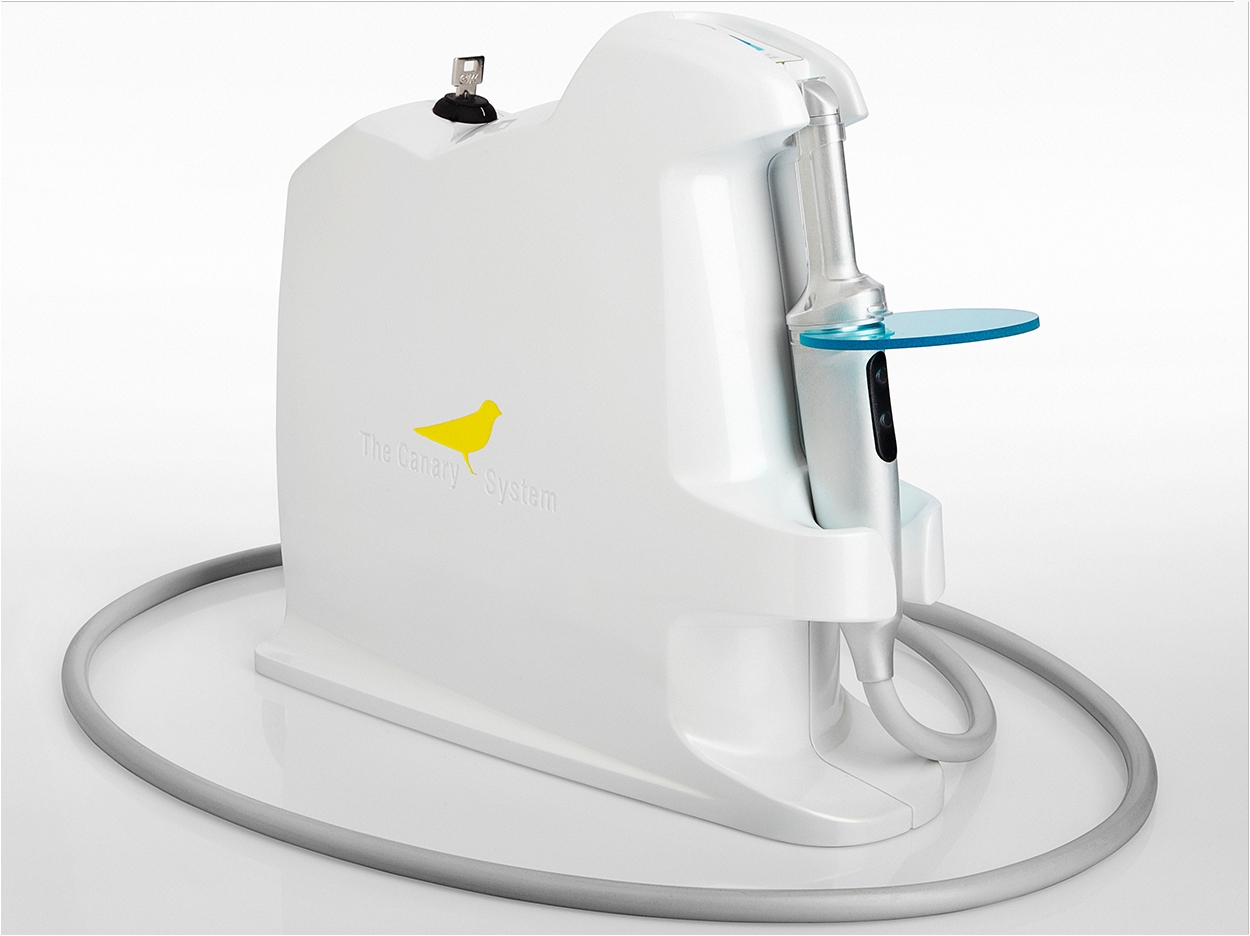
Visually, tooth decay may appear as a white or brown spot, but assessing its impact beneath the surface is difficult. Quantum Dental Technologies’ Canary System, however, measures caries lesion depth more accurately than other methods, according to a recent study.
The researchers correlated the lesion depth of natural caries measured with Polarized Light Microscopy to Canary Numbers derived from the Canary System, numerical readings from DIAGNOdent, and lesion scores from the International Caries Detection and Assessment System II. They selected 20 examination sites on extracted human molars and premolars.
For instance, one intact tooth surface showed a typical white spot with no black or brown stain. The Canary System measurement of 55 indicated that a large lesion was beneath the enamel surface. When cross-sectioned and examined under the microscope, the white spot was up to 0.5 mm deep in certain areas, yet the surface appeared intact.
The researchers noted that visual examination and x-rays should not be the only tools used for detecting tooth decay. X-rays, for instance, can only find tooth decay on the sides of the teeth once it has grown to involve at least half of the enamel shell. The Canary System can measure lesion volume and depth and measure subtle changes over time.
“This moves dentistry from the drill, fill, and bill model to treating caries from the start of the disease process. The Canary System is the only device on-market that can measure and monitor these subtle changes,” said Stephen Abrams, DDS, cofounder of Quantum Dental Technologies.
The Canary System is designed to quantify, image, monitor, and record changes in the structure of enamel, dentin, and cementum. It can detect caries beneath opaque sealants, around the margins of restorations, around orthodontic brackets, and beneath interproximal, occlusal, and smooth surfaces. Also, the Canary Cloud enables dentists to view and manage this data and track Canary usage in their office.
The study, “Correlation with Caries Lesion Depth of the Canary System, DIAGNOdent and ICDAS II,” was published by The Open Dentistry Journal.
Related Articles
ADA Approves Code for Canary System
The Occlusal Caries Biopsy Helps Preserve Teeth












